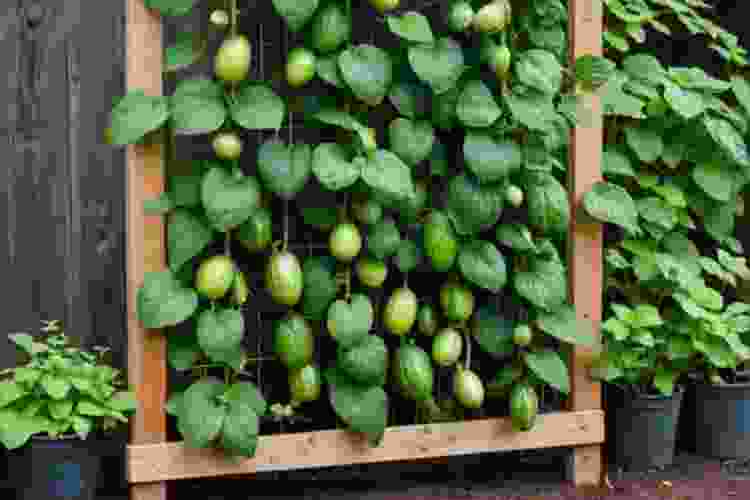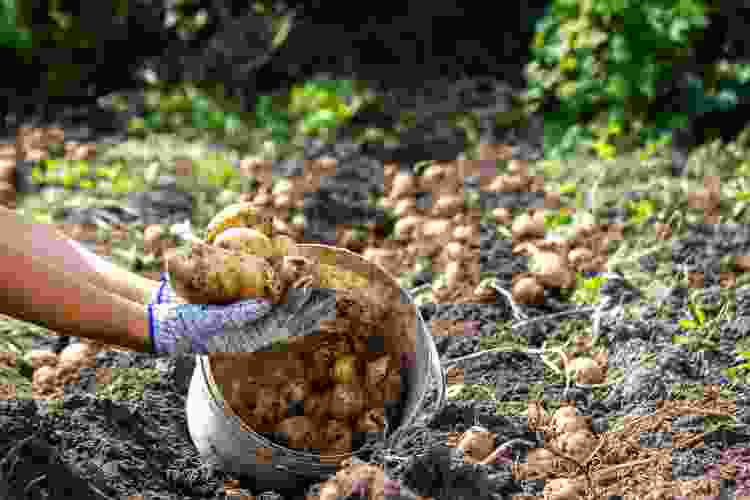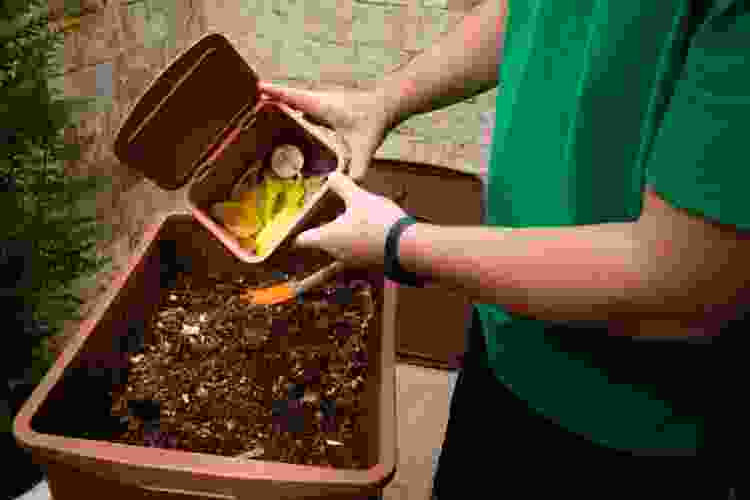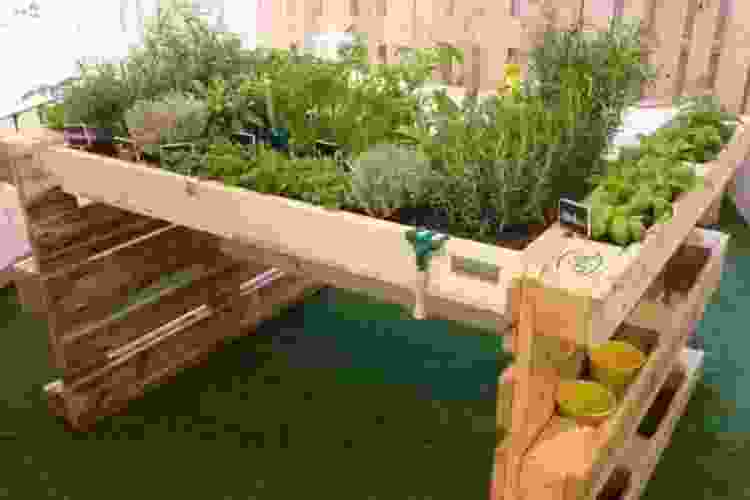31 Edible Vegetable Garden Ideas You’ll Love in 2025

Ready to grow your own fresh vegetables? These vegetable garden ideas will inspire beginner gardeners to create a space that fits their needs and preferences. With the right plants and a bit of DIY effort, you’ll be enjoying homegrown veggies in no time.
Pick a garden plan that suits your space and turn it into a rewarding DIY project. It’s the perfect opportunity to explore creative touches, from rock painting to customizing flower pots, adding a personal flair to your gardening experience.
Jump to Section
- Simple Vegetable Garden Ideas That Get Results
- Herb and Vegetable Garden Ideas for Small Spaces
- Vegetable Garden Ideas on a Budget That Still Grow Big
- Outdoor Vegetable Garden Ideas for Bigger Yields
- Vegetable Garden Ideas DIY: Build It Yourself
- Vegetable Garden Ideas FAQs
Simple Vegetable Garden Ideas That Get Results
1. Indoor Five-Veggie Essentials

The five indoor vegetable essentials — peppers, eggplants, beans, basil and cucumbers — are self-pollinating and can produce year-round with minimal effort. Not only do they thrive indoors, but they also double as charming DIY home decor, all while providing a steady source of fresh food.
Once your garden starts yielding, turn your harvest into delicious meals. Consider joining cooking classes in Ann Arbor, cooking classes in Boston and cooking classes in Charlotte — or a city near you — and learn how to turn your produce into delicious vegetarian food.
2. Container Garden on the Patio
If you have a patio, meaning a covered outdoor space connected to your house, then a container garden might be a good option for you. These gardens are low-maintenance and it's easy to keep bugs and pests away. You can grow a few herbs in there or focus on a single root vegetable.
3. Self-Watering Planters
Self-watering planters are innovative vegetable garden ideas that feature a built-in water reservoir at the base. The planter draws water upward through capillary action, giving roots consistent moisture without overwatering. It's a convenient solution for maintaining healthy plants with less effort.
4. Vertical Trellis Garden

Vertical trellis setups are excellent vegetable garden ideas, especially for growing climbing plants like peas, beans or cucumbers. By training these plants to grow upward, you maximize space, improve airflow and keep fruit off the ground. This will give you a cleaner harvest and fewer pests.
5. Mulched Pathways
Mulched pathways are effective vegetable garden ideas that help suppress weeds and conserve soil moisture. By laying down materials like straw, bark or wood chips between rows, these pathways reduce evaporation and prevent foot traffic from compacting the soil.
Herb and Vegetable Garden Ideas for Small Spaces
6. Window Boxes with Edibles

Window boxes are ideal for growing smaller vegetables and herbs that thrive in confined spaces and can be easily pruned. Since these plants also need plenty of sunlight, windows are an ideal location. Herbs like mint are a great option as they grow quickly, handle limited space well and produce throughout the spring, summer and fall seasons.
7. Hanging Planters
Hanging planters are stylish vegetable garden ideas that work well if you have limited ground space. You can suspend containers from ceilings, railings or stands. Herbs and small vegetables like cherry tomatoes or strawberries thrive in these planters, as they get more light and airflow above ground.
8. Stacked Herb Tower
A stacked herb tower is a great way to save space while growing fresh herbs. These vegetable garden ideas work by stacking pots or containers, giving each tier its own access to sunlight, while excess water drains down to nourish the layers below. Herbs like basil, thyme and parsley thrive in this setup, offering a simple way to enjoy fresh flavors year-round.
9. Balcony Garden Boxes

Balcony garden boxes are a perfect solution for urban gardeners with limited space. These vegetable garden ideas involve narrow planter boxes placed along balcony railings or floors. They work best for shallow-rooted vegetables like lettuce or radishes.
10. Indoor Grow Lights for Kitchen Herbs
Indoor grow lights are a great way to grow kitchen herbs indoors, especially when natural sunlight is limited. These vegetable garden ideas work by using LED or fluorescent lights positioned close to plants to provide full-spectrum light for photosynthesis, especially during low-light seasons. This setup is perfect for growing herbs like basil, thyme or parsley indoors during low-light seasons or year-round.
11. Hydroponic Indoor System
Hydroponic indoor systems are perfect for growing vegetables without soil. These vegetable garden ideas work by using nutrient-rich water to deliver precise nutrients and oxygen directly to the plant roots, resulting in fast growth and high yields with minimal mess.
Vegetable Garden Ideas on a Budget That Still Grow Big
12. Grow High-Yield Crops

For backyard gardens in many growing zones, high-yield crops like root vegetables and herbs are a great choice. Think of plants like squash, potatoes, basil and rosemary. Alternatively, the different varieties of legumes tend to be great producers and very hardy.
13. Start from Seeds
Starting your vegetable garden from seeds gives you the chance to skip nursery plants and go straight to planting in soil or starter trays. This allows you to grow more plants at a lower cost while enjoying a wider variety of vegetables.
14. Use Recycled Containers
Recycled containers, like buckets, milk jugs or old drawers, can be repurposed as planters for your vegetable garden ideas. By drilling drainage holes and filling them with soil, you can grow crops affordably and sustainably.
15. DIY Compost Bin

A compost bin turns food scraps and yard waste into rich organic matter. This simple idea helps nourish your soil naturally, providing essential nutrients and helping your garden thrive without store-bought fertilizers.
16. Propagate Scraps
Vegetable garden ideas like propagating scraps, such as green onion roots or romaine hearts, can regrow in water or soil. This method takes advantage of the plant's natural regrowth cycle, helping to reduce food waste and increase your garden's bounty.
17. Use Newspaper Mulch
Using newspapers as mulch in vegetable gardens helps suppress weeds and retain soil moisture. Simply dampen the newspaper, lay it around your plants and top it with compost or straw for an affordable, eco-friendly solution.
18. Collect Rainwater

Using rain barrels to collect water from rooftops is one of the smartest vegetable garden ideas. This eco-friendly method provides a free, sustainable water source for your plants, helping to conserve water while lowering your utility bill.
Outdoor Vegetable Garden Ideas for Bigger Yields
19. Succession Planting Plan

Succession planting is a technique that involves planting crops in stages to ensure a continuous harvest throughout the growing season. It typically involves starting seeds about eight weeks before you plan on planting and then planting throughout a two-month phase. Look up a succession planting chart suited to your local zone for the best results. This method works best for experienced gardeners or those who like to stay organized.
20. Soil Testing and Amending
One of the fundamental vegetable garden ideas is testing and amending your soil. Start by checking the pH and nutrient levels of your soil. Based on the results, amend with compost, lime or fertilizer to create the best growing conditions for your crops.
21. Crop Rotation Beds
Rotating crops each season is one of the most effective vegetable garden ideas to maintain soil health. By planting different vegetable families in new spots annually, you prevent nutrient depletion and reduce pest buildup, ensuring a more productive garden.
22. Drip Irrigation System

Drip irrigation systems are one of the smartest vegetable garden ideas. Water is delivered directly to the root zone, which reduces water waste and prevents disease by avoiding wet leaves while keeping the soil consistently moist.
23. Use Pollinator-Friendly Flowers
Incorporating flowers like marigolds, zinnias or lavender into your vegetable garden ideas attracts bees and butterflies. This increases pollination, which is essential for fruiting crops like tomatoes, squash and cucumbers.
24. Compost Tea Feedings
Compost tea, a liquid made by steeping compost in water, is a great addition to your vegetable garden ideas. By spraying or drenching plants with this nutrient-rich brew, you enhance microbial activity, supporting growth and plant health.
25. Install Windbreaks

Installing fences, shrubs or rows of sunflowers shields your garden from wind. It's one of those practical vegetable garden ideas that protect delicate plants, reduce evaporation and create a more stable microclimate for growing.
Vegetable Garden Ideas DIY: Build It Yourself
26. Cinder Block Garden Frame

Cinder blocks are a versatile material for building raised garden beds. Many gardeners use them to elevate their beds for easier access and they can also be used to form the frame of the bed. Simply add non-water-soluble mortar for durability and a wheelbarrow can help with transportation.
27. PVC Hoop House
A PVC hoop house is a mini greenhouse made by bending PVC pipes over a garden bed and covering them with plastic. By trapping heat, these vegetable garden ideas extend the season by protecting plants from frost.
28. Wooden Cold Frame
Cold frames are low wooden boxes with clear lids that trap sunlight and warm the soil. As part of your vegetable garden ideas, they help extend the growing season, allowing you to start seeds earlier in spring and protect tender crops late into fall.
29. Pallet Planter Box

Repurposing wooden pallets into vertical or horizontal garden beds is a creative way to create vegetable garden ideas. These structures are perfect for shallow-rooted herbs, lettuce or flowers.
30. DIY Potting Bench
A potting bench provides a waist-high surface for transplanting, organizing tools and mixing soil. It's one of those vegetable garden ideas that helps make gardening more efficient and keeps your workspace tidy during the planting season
31. Reclaimed Gutter Wall Planter
By mounting old gutters on a wall or fence, you can grow shallow-rooted crops like spinach or herbs. This setup maximizes vertical space and gives walls a functional green upgrade.
Vegetable Garden Ideas FAQs
What Is the Best Layout for a Vegetable Garden?

The best vegetable garden layout depends on your space, sunlight and the types of plants you want to grow, but a thoughtful plan makes all the difference. Start by choosing a sunny, convenient location with easy access to water and minimal competition from trees or shrubs. Raised beds or containers are perfect for beginners, offering structure without overwhelming maintenance.
Next, list your favorite veggies and design your space accordingly. Use graph paper to sketch your garden, keeping beds about 3 to 4 feet wide for easy access. Arrange tall plants in the back, medium in the middle and small in front. Leave enough room between rows or containers for walking and wheelbarrow access.
Don’t forget to rotate crops each year and leave space for trellises and pollinator-friendly plants. With a smart layout, your vegetable garden will be productive, beautiful and easy to manage all season long.
What Veggies Grow Well Together?
Some vegetables thrive when planted side by side, thanks to a technique called companion planting. By grouping the right plants together, you can improve growth, deter pests, enrich the soil and even enhance flavor. It’s a simple way to let nature help your garden thrive.
Here are some top-performing combinations:
-
Tomatoes grow better with basil, carrots, onions and parsley, while corn and potatoes should be planted far away to avoid shared pests.
-
Carrots do well near beans, lettuce, peas and tomatoes, but avoid placing them next to dill, which can hinder growth.
-
Beans pair well with corn, cucumbers and radishes, but should be kept away from onions and garlic.
-
Squash and zucchini thrive with nasturtiums, radishes and peas, but dislike proximity to potatoes.
-
Lettuce and spinach make great neighbors for most vegetables, especially beets, cabbage and strawberries.
Herbs and flowers also make excellent companions. Marigolds help almost everything by repelling root pests. Mint and sage deter cabbage moths. Also, zinnias attract ladybugs, which feast on harmful insects.
What Is the Best Vegetable Garden for Beginners?

The best garden for beginners is small, sunny and filled with easy-to-grow vegetables you and your family actually enjoy eating. Starting simple ensures you won’t get overwhelmed and helps you build confidence as a new gardener.
Start with a 4x4 or 4x8 raised bed or a 10x10 in-ground plot in a sunny location (6–8 hours of sunlight per day). Raised beds help with drainage and reduce weed pressure. These vegetables are productive, low-maintenance and work well together.
-
Tomatoes + Basil + Marigolds: Boost flavor, growth and pest resistance.
-
Carrots + Radishes + Lettuce: Quick-growing crops you can harvest in stages.
-
Zucchini + Beans + Nasturtiums: Beans fix nitrogen and nasturtiums distract pests.
-
Peas + Spinach + Beets: All thrive in early spring and cool soil.
Beginner Garden Tips
-
Start small: Choose just 3–5 types of vegetables you love to eat.
-
Stagger plantings: Don’t plant all your lettuce at once — spread it out for continuous harvests.
-
Use good soil: Mix compost or organic matter into your soil for healthy plant growth.
-
Group by water needs: Deep-rooted veggies like tomatoes need less frequent, deeper watering than leafy greens.
-
Avoid overcrowding: Follow spacing guidelines on seed packets or plant tags to ensure each plant gets enough room.
What Vegetables Should Not Be Planted Next to Each Other?
While companion planting can boost productivity and protect your crops, planting the wrong vegetables together can backfire, leading to stunted growth, poor yields, pest infestations and even odd-tasting produce. Here are key vegetable pairings to avoid:
-
Beans + Onions or Garlic: Onions and garlic release natural compounds that disrupt bean growth by killing helpful bacteria that beans need for nitrogen fixation.
-
Tomatoes + Potatoes or Corn: These crops attract similar pests and diseases, like blight and hornworms, which spread quickly when grown together.
-
Cucumbers + Squash or Pumpkins: Members of the same plant family, they compete for nutrients and attract similar pests like squash vine borers.
-
Lettuce + Celery: Celery attracts aphids and whiteflies, which can easily spread to delicate lettuce leaves.
-
Asparagus + Onions: Onions can suppress asparagus growth and share harmful pests like cutworms.
These vegetable garden ideas bring fresh inspiration to your space, making it easy to grow your own produce with minimal effort. From simple setups to creative solutions, there’s something here to suit every garden, big or small.
For even more fun home project ideas, check out other experiences happening on Classpop!

